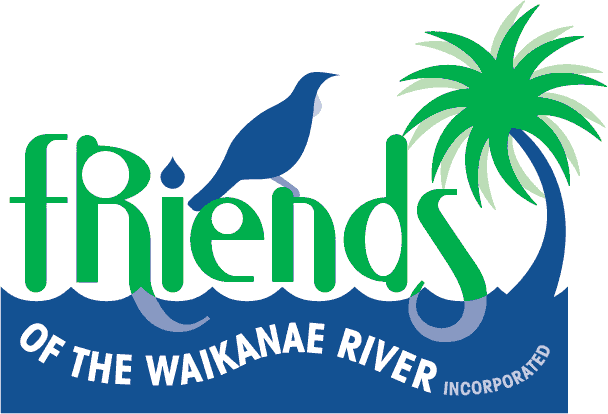|
|
|
 |
Newsletter |  |
| LATEST NEWS Newsletter January 2020 editor Russell Bell Vision: That the Waikanae River and its environment is enhanced and maintained in optimum condition for all to enjoy. What FWR do to achieve our vision
The Nursery Seeds We eco-source all our seeds. Most are bought from a reputable local supplier. The small number of additional plants we eco-source come from completely native areas of the Kapiti coast or from a tree (such as a matai) whose size, indicating its age, means that the tree existed on the Kapiti Coast before European settlement. One of the challenges in seed collection is that some trees fruit once every few years so you cannot always get what you want. Germination This is a very difficult area of plant propagation. The seeds of each species have their peculiarities so species specific processes have to be followed for a successful germination. For some, the seed must be fresh, some kept dry, others kept wet (or it will rot). Some seed need to be put in a freezer for some time and some will only have a portion germinate each year so that if the weather that year is not suitable, another portion of seed will sprout next year when hopefully the season will be better. Pricking seedlings out and potting on This is a job for people who are careful. Many of the seedlings are delicate at this stage and many are growing so thickly, their roots are entangled, but soon they are growing in separate, small containers (plugs). Growing on until ready for planting Finally, plants are repotted into PB3 bags and stood out in the weather to grow to a size where they can be planted. Of course planting only happens in winter once the soils are wet enough. Some places we look after Dave’s Patch Dave was a very prominent member of the Friends. He had a patch on the river where he planted, weeded. Unfortunately, he died before he could complete his patch. The Friends have taken on the patch and will work to complete it. Totara Strip This area is close to the nursery and needs a few more totara and a small amount of weed control to complete it. Nursery Shelter This area is immediately west of the nursery. The tall conifers have recently been removed leaving the nursery exposed to western winds. The area will be planted with natives. Carex Areas We have planted the sides of drains that enter the river in Carex Secta (a native grass). They are not as big as the two in this photo but one day will be. they like their feet wet and their roots hold banks together. They are also important for native fish which hide under their overhanging foliage during daylight. If there were more people If more people became active in the group, we would most probably adopt another area of the river. For instance, an area just across the Te Arawai bridge has many weeds. - mainly geraniums tradescantia and ivy. These weeds climb up and cut out the sunlight from growing trees. They also hide planted trees and in some cases pull them down to the ground eventually overcoming and killing them. We would love to have the manpower to clear some areas like this to let existing plants thrive and sooner or later deprive the weeds of light. This is the only way we will ultimately get the banks of the Waikanae functioning in a natural way with little maintenance needed. Taking care of the River bank There is a remarkable example of care of the recreational utility and ecological health of an area of riverbank just below Dave’s patch. The Friends planted below the river trail as they have for other areas. But for years, Tony Jack, a member of FWR and a nearby resident has cared for it. He has weeded it and kept the open area tidy. Alongside is one of the best swimming holes of the river. When someone takes on a small patch of riverbank such as this, they can make a huge difference. This area is very well used, and most summer days, people can be seen swimming and picnicking there. There are quite a few other similar swimming holes in the upper part of the river, such as the lower photo, but they are not as accessible from the northern bank because they have not had the attention that Tony’s area has had. There are, of course, other groups who work on patches of the river. This may be a model for the restoration of parts of the river. We would certainly welcome others (a family or group) taking recreational utility and ecological ownership of other areas. Of course, there are rules that must be followed such as eco- sourcing plants and of course no one has priority to any part of the river. When we meet We meet almost every Monday morning at 9.00 at the nursery on the river access at the end of Nimo Avenue East. Managing the production of plants is the major activity and we fit in the places we look after around the needs of the plants we are growing. Working on the river also depends on the number of people who turn up on the day and the activities those people want to be involved in. We end with morning tea about 11am. There is always something to do. Feel free to visit us or get involved and see if you like it. If interested, ring Russell Bell 0212266047.
Working Bees Weekly Working Bees are on most Mondays at 9am for two hours. Meet at the nursery, off the accessway to the river off Nimmo Avenue East. Regular maintenance is being done at this time. Please join us. REMEMBER VOLUNTEERS REQUIRED AT ALL TIMES TO ASSIST WITH MAINTENANCE OF PLANTINGS
|
 |
|
|
|